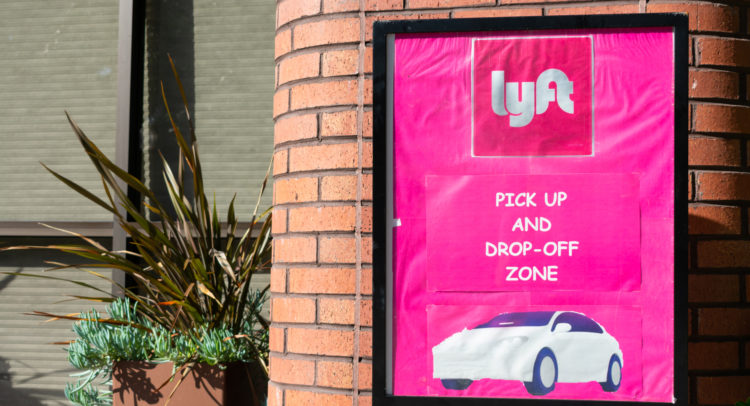Lyft Inc. said Wednesday that its cost-cutting plan and a rebound in rideshare rides will allow the company to hit the milestone of profitability by the end of 2021 even as second-quarter sales plunged 61%.
Invest with Confidence:
- Follow TipRanks' Top Wall Street Analysts to uncover their success rate and average return.
- Join thousands of data-driven investors – Build your Smart Portfolio for personalized insights.
Lyft (LYFT) reported that second-quarter revenue fell 61% to $339.3 million year-on-year, missing analyst consensus by $10.14 million. The revenue drop was driven primarily by a decline in active riders as shelter-in-place orders and other restrictions tied to the coronavirus pandemic across North America reduced travel.
The ride-hailing company posted an adjusted EBITDA loss of $280.3 million in the second quarter, which was less than its earlier guidance of a loss of $325 million. Analysts had estimated a loss of $290.8 million for the quarter.
“We saw a rebound in demand in Q2 and have seen further evidence of this trend since the end of Q2. Rideshare rides in July were 78% greater than April,” said Lyft CEO Logan Green. “We now expect we can achieve adjusted EBITDA profitability with 20% to 25% fewer rides than what was assumed. While we can’t perfectly predict the timing of a recovery, based on the reduced ride levels required for us to break even, we believe that there are multiple scenarios that should allow us to hit this milestone by the fourth quarter of 2021.”
Green said that Lyft remains on track to reach $300 million of annualized fixed cost savings by the fourth quarter of 2020. The company added that rideshare rides for the week ending Aug. 9 reached a new high since April but is still down 53% year-on-year.
A bright spot in Q2 results was bikeshare. Weekly bike rides increased over 200% from the beginning of April to the end of June, and new bike rider activations in the month of June were up 11% year-over-year. Ride volumes for bikes are now above pre-pandemic levels, as riders seek out this affordable, efficient and open-air mode of transportation, the company said.
Meanwhile, Lyft also commented on Monday’s decision by the Superior Court of California, which granted a preliminary injunction motion filed by the State, to force the ride-hailing company and Uber to reclassify drivers as employees in California.
“That injunction has been stayed until August 20, and we may appeal this ruling and request a further stay,” said Lyft President John Zimmer. “If our efforts here are not successful, it would force us to suspend operations in California.”
Shares in Lyft have dived some 29% so far this year as stay-at-home orders curtailed demand for its ride-sharing services. Meanwhile, the $44.79 average price target implies 47% upside potential in the shares in the coming 12 months.
Stifel Nicolaus analyst Scott Devitt lowered the stock’s price target to $30 from $34 and maintained a Hold rating, citing a “balanced risk / reward profile and lack of visibility into demand recovery”.
“We view risk as elevated for Lyft and Uber during the appeal period into next week, though Lyft’s higher exposure to the California market as a percentage of mix creates relatively higher near-term stock risk for Lyft,” Devitt wrote in a note to investors. “The company is facing a severe near-term slowdown in transportation activity, though we view the balance sheet as solid.”
Overall, Wall Street analysts have a cautiously optimistic outlook on the stock with 13 recommending to buy the stock, while 6 say hold the stock, adding up to a Moderate Buy consensus. (See Lyft stock analysis on TipRanks).

Related News:
Nio Rising 8% On Record-High Quarterly Deliveries; But Street Cautious
Lyft Drops After Court Order To Classify Drivers As Employees
Occidental Petroleum Posts $8.4 Billion Loss in 2Q Amid Oil Price Crisis









